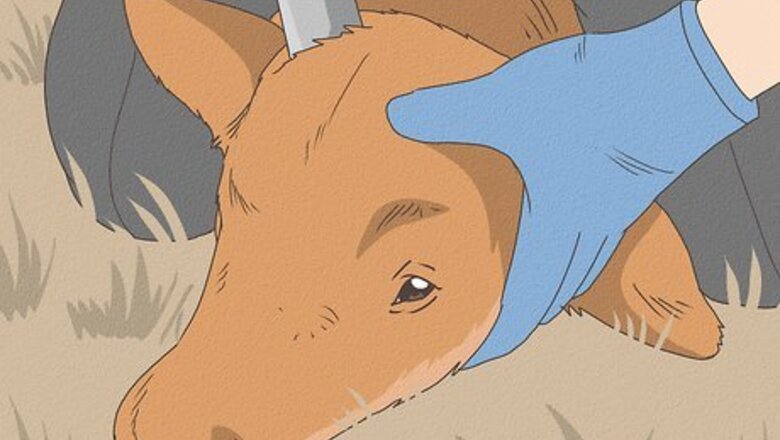
views
Most calves are weaned between 120 and 290 days (3 to 10 months) after birth, but most producers like to wean their calves when they're around 205 (6 months) of age. Weight is also a factor, with the minimum being generally around 132lb (60kg).[1]
X
Research source
Preconditioning calves prior to weaning

De-horn and castrate well ahead of weaning time. This will minimize stress on the calves since this will not be done right at weaning time, causing illness and weight loss in the weaned calves.

Bring the cows and calves into a small well-fenced pasture paddock two to three weeks ahead of the actual weaning schedule to get the calves used to their new surroundings. If weaning paddocks are not available, use small pastures (with good fencing!). Don't put the cows and calves in pens that consist primarily of dirt; this is to avoid respiratory diseases and pneumonia caused by dust that often crop up during and after weaning time.
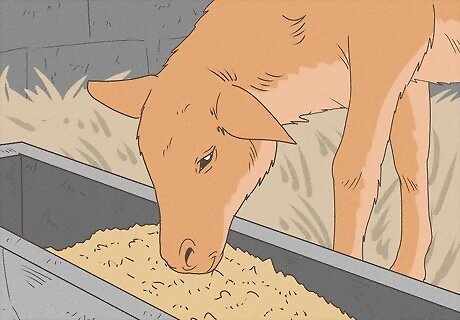
Precondition the calves. Creep-feed (or precondition) the calves so that they learn to eat from a feed bunk before being weaned. Preconditioning calves is a great method to adopt to reduce stress for calves at weaning time. Preconditioning involves getting calves used to eating out of a feed bunk or trough, and drinking from a water trough. This should be done without the cows around, as cows tend to be more pushy and bossy around the feed bunk and water trough, not allowing the calves in at all. Use of a creep-feeder is best to get the calves used to eating out of a feed bunk. A creep feed or precondition ration for calves should include a mix of grain silage (corn, sorghum, barley, wheat or oats) and legume-hay, plus a concentrate supplement that includes protein. Make sure the supplement you are giving them does not have animal by-products in it at all, as this could be serious if one or some of the calves develop symptoms of BSE when they get older (especially in those heifers that will be used as cows.)Also, keep the feed free of mold and dust, as this will cause calves to get sick with illnesses like pneumonia.
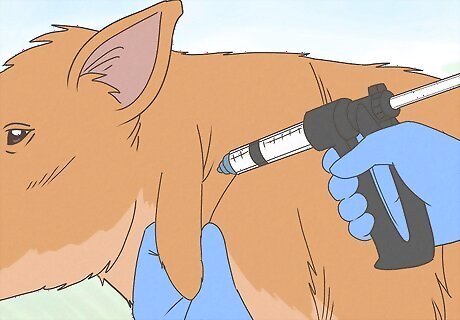
Provide immunization and boosters. Give calves their first immunization treatments while they're still nursing, and follow with booster shots as recommended by your veterinarian or the manufacturer of the vaccines. A herd-health program should have been established between you and your local large animal veterinarian so that you are prepared to give the calves whatever needs to be given in your area. Treat for internal and external parasites as well.

Wean the calves by moving the cows out of the weaning paddocks so that the calves remain in their familiar surroundings.

Keep an eye on the calves during this stressful period. Handle and treat the calves with care and a bit of TLC. Confide with your veterinarian about use of tranquilizers during the weaning process to calm the calves and to minimize weight loss.

For the cows, do not feed milk-stimulating feeds (those that contain high amounts of calcium and proteins) to cows at weaning time. Putting them on a grass-only diet of hay or putting them out on poorer pastures will help the drying up process proceed quicker.
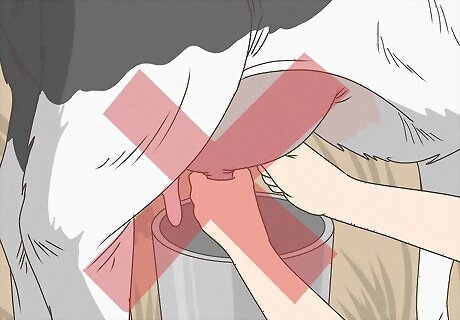
Do not milk the cows during this time. Keep an eye out for any signs of mastitis or swollen udders.
The actual, traditional, low-stress weaning process

Make sure it's a good day to wean. Sunny, calm and warm weather is better than windy, rainy or cold weather.

Put feed out in an area where the cows will be able to see and smell you putting out the feed.

Let the cows out. Once the cows are at the gate, open up the gate and let them through, using calm and effective herding cattle practices. You can choose to let a few cows at a time to ease the calves into the weaning process, letting out a handful of cows out of the weaning paddock into another one once a day or twice a day, however many cows and calves you have to wean. You can choose to leave a few babysitter cows–those that are open (not pregnant) and you intend on culling later on, or need better quality pasture because of their age–with the weaned calves. Yearling heifers even work great as den-mothers or babysitters.

Close the gate after the number of cows you wish to let out are out, making sure none of the calves have chose to escape in the meantime. Usually with calm handling practices, you won't get any calves that will escape, because usually the cows go through the gate first, then the calves follow soon after.

Leave the calves in the corral for a few days until they've settled down before you decide to load them up and sell them at the auction mart.
Fence-line weaning

Prepare. Following the steps above in the sections "Preconditioning Calves Prior to Weaning" and "The Actual Traditional Low-Stress Weaning Process," separate cows from the calves into adjacent paddocks where they can see and possibly sniff each other but the fence does not allow any suckling to occur. Placing page wire and strands of electric wire on either side of the fence is a good way to keep from calves and cows from getting back to each other. Having a two-layered fence built may also help prevent the more desperate mothers from getting back to their calves.
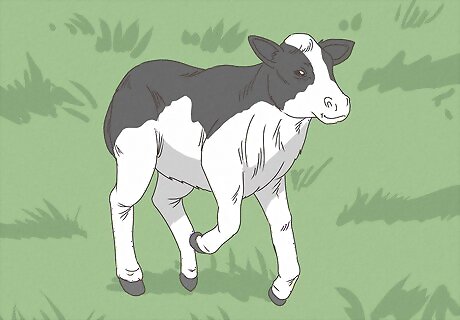
Leave them be. Allow this interaction for the next 3 to 5 days, until you see the cows and calves losing interest in each other.
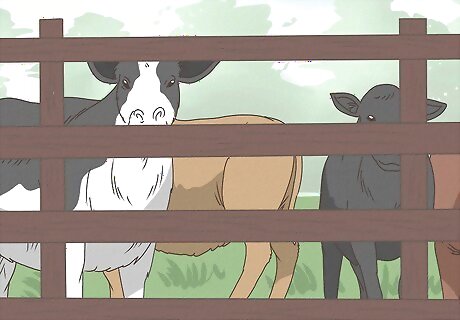
Move the cows after several days. If you wish, you can move the cows to another pasture after this weaning process has gone through.
Nose-flap or spiked nose ring weaning
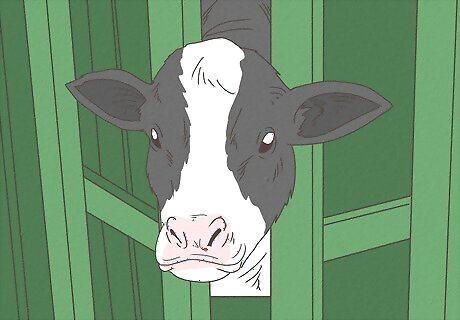
Run the calves through the crush or squeeze chute.
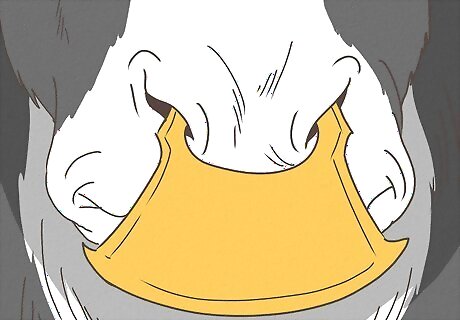
Put the nose flaps in the calf's nose; you will just need to manipulate the ends of the nose ring so that it will stay in the calf's nose, or use a small screwdriver or wrench to adjust and hold the nose-flap or spiked nose-ring in place. The nose ring is temporary, unlike a bull's nose ring, and will be removed after a week or two.
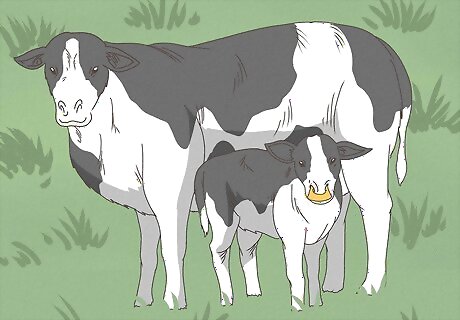
Let the calf out with the cow. The cow will kick off the calf if he attempts to nurse because the spikes on the nose ring prod her in the udder. The nose ring does not prohibit the calf from grazing, eating in the creep feeder or drinking water, nor does it prohibit the calf from being with his mother.
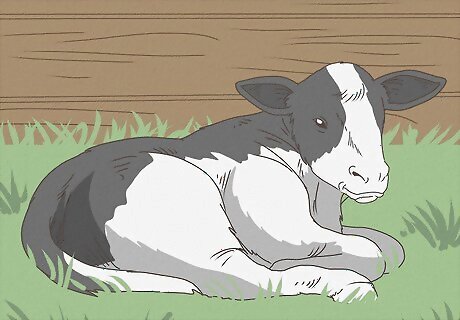
After a week or two has passed, the cow's milk will have started to dry up and the calf will have already adjusted to not having milk. You can now separate the cows from the calves with very little stress and remove the nose rings from the calves. Ideally it is best to remove the weaner rings after seven to ten days.
Weaning hand-reared calves
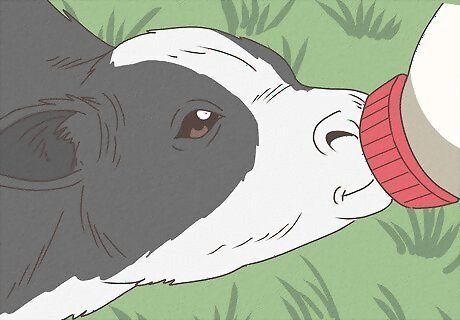
Prepare yourself for the weaning process. Weaning an orphan calf that you have raised and nurtured for the past few months can be and emotional strain on both you and the calf. The calf will complain a fair bit during the weaning process but you must be diligent and stubborn. Bottle calves should be weaned by the time they are around 3 to 4 months of age.
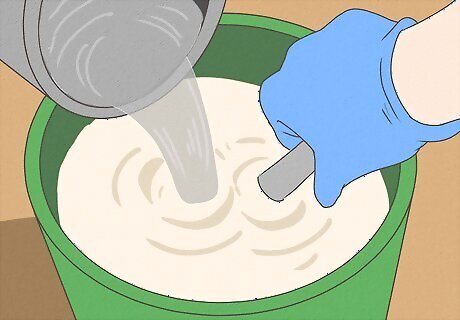
Consider two ways of weaning the bottle calf. These two methods include reducing the quantity of milk the calf gets per day, or diluting the milk solution gradually to the point where he's drinking only water. Reducing the quantity of milk can be a bit more stressful on the calf because he'd not getting the same amount of milk that he had before the weaning process started. Cutting back a few pounds per day is a good way to start. Diluting the milk is more towards the natural way a cow would wean her calf. This is because by the time the calf has reached a certain age (i.e., 3 months), the milk quality that the cow produces decreases over time. Diluting the milk formula an eighth (1/8) at a time until the "milk" is 100% water is a good way to go.

Provide feed, water and mineral at all times during the weaning process. The calf should already be eating hay and/or grain and/or grass by the time the weaning process has started. Also ensure that the hand-reared calf is on good pasture that is clean and leafy, if there is pasture available.



















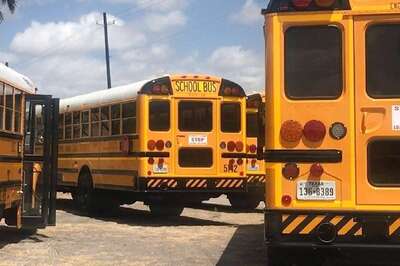
Comments
0 comment